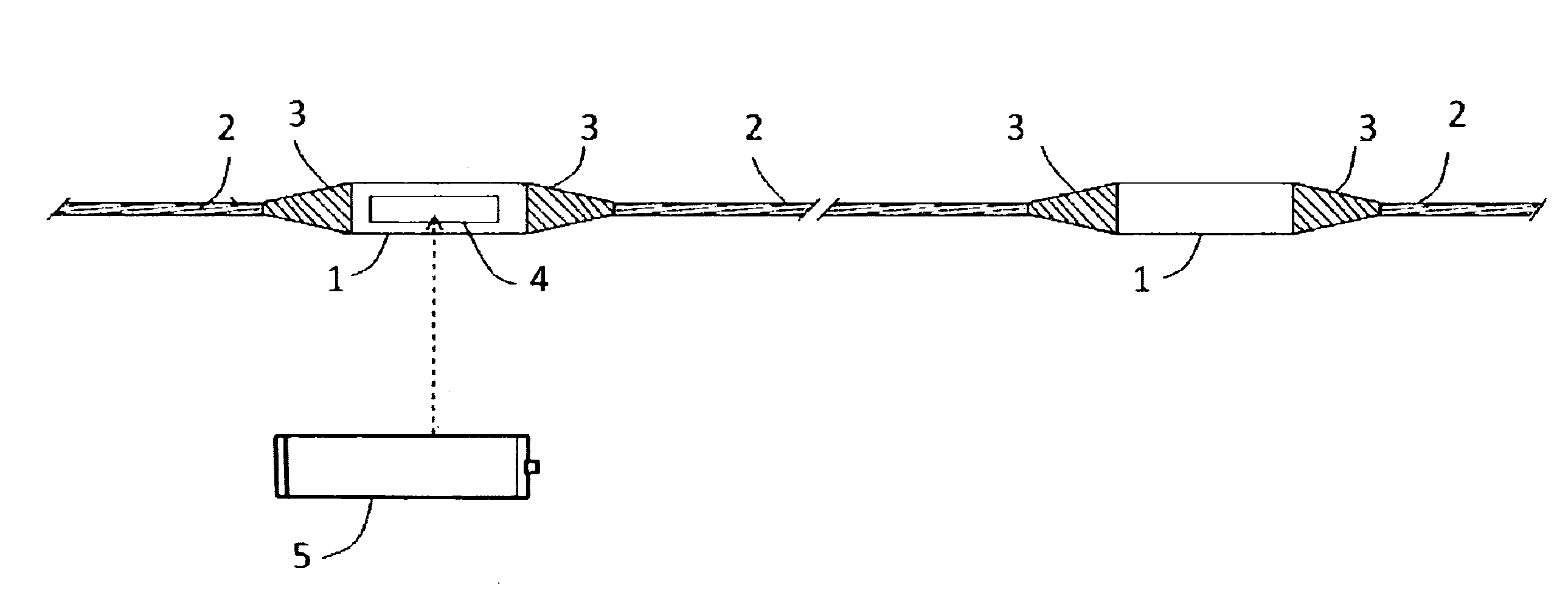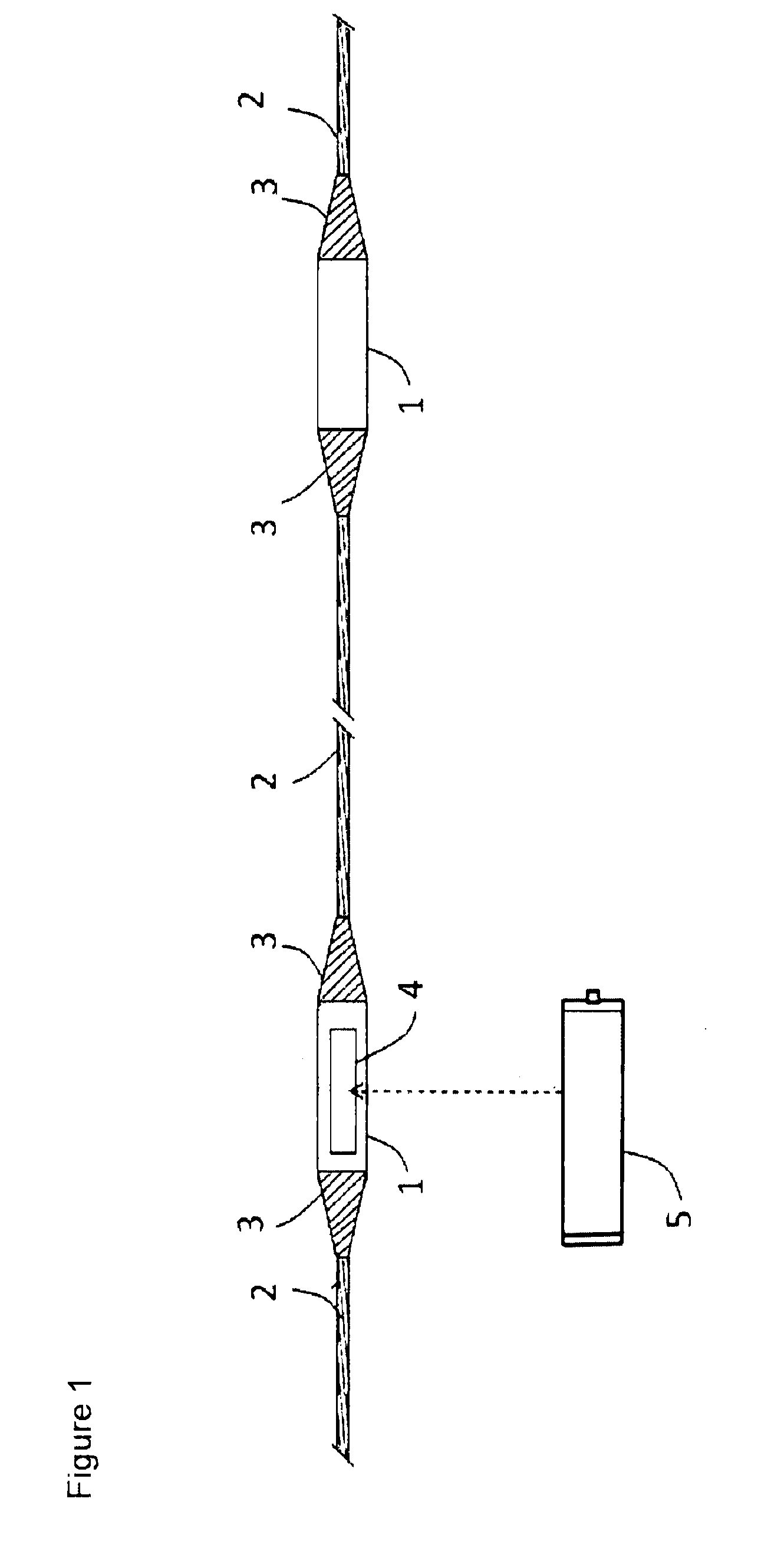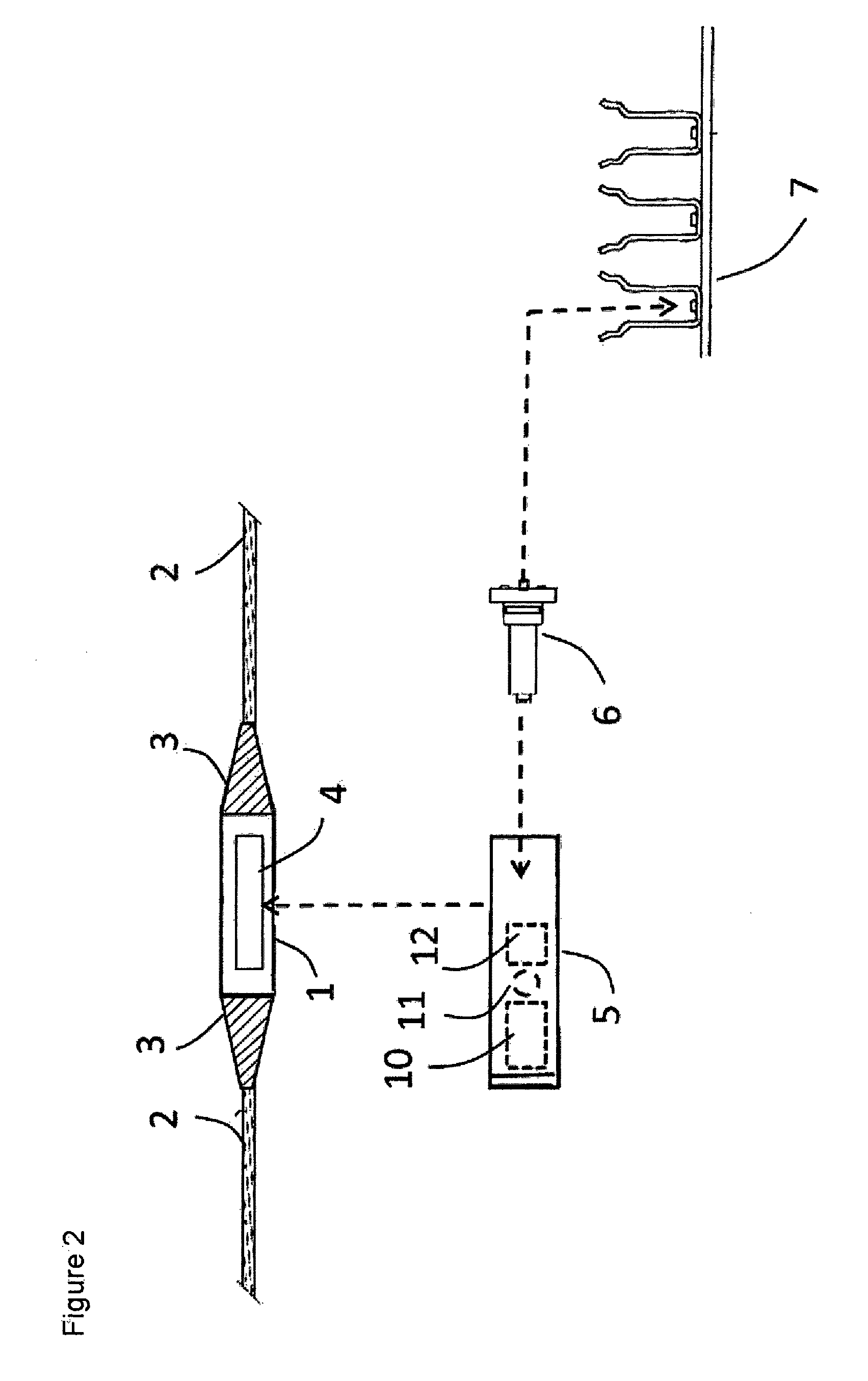Ocean bottom seismic cable recording apparatus
a recording apparatus and ocean bottom technology, applied in mechanical equipment, pipe laying and repair, instruments, etc., can solve the problems of inherently slow method, sensitive water leakage of cables, and relatively high data acquisition costs of ocean bottom cables, so as to improve the efficiency of handling and storage, reduce the risk of damage, and improve the effect of stress and mechanical wear
- Summary
- Abstract
- Description
- Claims
- Application Information
AI Technical Summary
Benefits of technology
Problems solved by technology
Method used
Image
Examples
Embodiment Construction
[0035]Example embodiments will be described with reference to the drawings. The same reference numerals are used for the same or similar features in all the drawings and throughout the description.
[0036]FIG. 1 illustrates a part of an autonomous ocean bottom seismic recording cable apparatus. A number of seismic node casings 1 are separated from each other by separate stress member sections 2. Each stress member section has acoustic decoupling arrangements 3 at each end for connection to the seismic node casings 1. FIG. 1 shows only two sensor nodes on the cable for illustration purposes. As shown in FIG. 1, the individual stress member sections 2 are attached via acoustic decoupling devices 3 to the seismic node casing 1. The individual stress member sections 2 and the acoustic decoupling devices 3 connect each sensor node casing 1 and form the recording cable. In FIG. 1, the seismic node casings are provided with an inner compartment 4 in which an autonomous sensor capsule 5 is pl...
PUM
 Login to View More
Login to View More Abstract
Description
Claims
Application Information
 Login to View More
Login to View More - R&D
- Intellectual Property
- Life Sciences
- Materials
- Tech Scout
- Unparalleled Data Quality
- Higher Quality Content
- 60% Fewer Hallucinations
Browse by: Latest US Patents, China's latest patents, Technical Efficacy Thesaurus, Application Domain, Technology Topic, Popular Technical Reports.
© 2025 PatSnap. All rights reserved.Legal|Privacy policy|Modern Slavery Act Transparency Statement|Sitemap|About US| Contact US: help@patsnap.com



